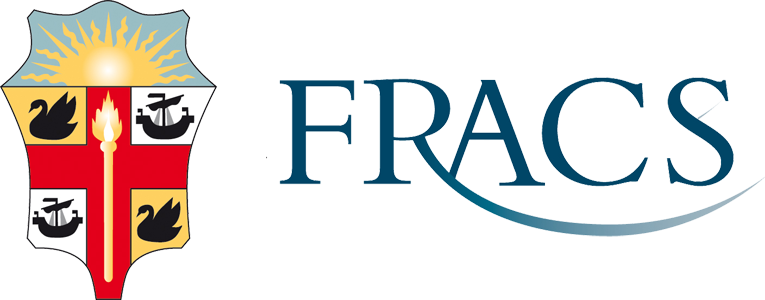Surgical Suitability
What is Surgical Treatment for Leg Pain?
Surgical treatment for leg pain refers to various procedures to address the underlying cause that cannot be adequately managed through conservative measures such as medication, physical therapy, or lifestyle changes. The specific surgical approach depends on the diagnosis and the condition causing the leg pain.
Who Should Undergo Surgical Treatment for Leg Pain?
The decision to undergo surgical treatment for leg pain is typically made on a case-by-case basis, considering the individual's specific condition, severity of symptoms, and response to conservative treatments.
- Failure of conservative treatments: If non-surgical approaches such as medication, physical therapy, lifestyle modifications, and other alternative options have been tried and failed to provide sufficient relief from leg pain, surgical intervention may be considered.
- Severe or progressive symptoms: When leg pain is severe, debilitating, or progressively worsening despite conservative treatments, surgery may be recommended to address the underlying cause.
- Nerve compression or impingement: If leg pain is caused by nerve compression or impingement, such as with a herniated disc or spinal stenosis, and conservative measures have not effectively resolved the issue, surgery may be necessary to alleviate the pressure on the nerves.
- Loss of mobility or function: When leg pain significantly impairs mobility, limits daily activities, or affects the individual's ability to perform essential tasks, surgical treatment may be considered to restore functionality and improve quality of life.
- Structural abnormalities or severe injuries: In cases where leg pain is caused by severe fractures, dislocations, or significant damage to blood vessels, tendons, or muscles, surgical intervention may be required to correct the issue and alleviate pain.
What Conditions Are Suitable for Leg Pain Surgical Treatments?
Several conditions may be suitable for surgical treatment for leg pain, including:
- Herniated disc: Surgical intervention may be considered when a herniated disc in the spine is compressing a nerve root, causing leg pain (known as sciatica).
- Spinal stenosis refers to the narrowing of the spinal canal, leading to compression of the nerves in the lower back. If conservative treatments fail to provide relief, surgery may be recommended.
- Peripheral artery disease (PAD): Severe cases of PAD, which involves the narrowing or blockage of blood vessels in the legs, may require surgical intervention to restore blood flow and relieve leg pain.
- Varicose veins: In some cases, when varicose veins cause significant discomfort or pain, surgical procedures such as vein ligation or vein stripping may be recommended.
- Fractures: In the case of severe fractures, surgical intervention may be necessary to stabilise the bone and facilitate proper healing, thereby reducing leg pain.
Benefits of Surgical Treatment for Leg Pain
The benefits of surgical treatment for leg pain can vary depending on the specific condition and the individual patient. However, some common benefits include:
- Pain relief: Surgical intervention addresses the underlying cause of leg pain, which can lead to significant relief or elimination of pain symptoms.
- Improved mobility and function: By addressing the root cause of leg pain, surgical treatment can restore mobility and functionality to the affected leg, allowing individuals to engage in activities they may have been restricted from due to pain.
- Enhanced quality of life: Relief from chronic leg pain can significantly improve a person's quality of life by enabling them to participate in daily activities without discomfort or limitations.
- Faster recovery: In some cases, surgical treatment can expedite recovery compared to conservative measures, allowing individuals to return to normal activities more quickly.
Types of Surgical Treatment for Leg Pain
There are several types of surgical treatments for leg pain, depending on the underlying cause of the pain. Here are some common surgical interventions:
- Discectomy: This procedure involves the removal of a herniated disc that is compressing a nerve in the spine, causing leg pain.
- Spinal decompression surgery aims to alleviate leg pain by relieving pressure on the spinal nerves. Examples include laminectomy, laminotomy, or foraminotomy.
- Spinal fusion: This surgery stabilises the spine and fuses two or more vertebrae. It is typically used for conditions like spondylolisthesis or spinal instability that cause leg pain.
- Arterial bypass surgery: In peripheral artery disease (PAD), where blood flow to the legs is impaired, bypass surgery can redirect blood flow around the blocked or narrowed arteries.
- Endovascular procedures: These minimally invasive procedures, such as angioplasty or stenting, open up narrowed or blocked arteries in the legs, improving blood flow and alleviating leg pain in conditions like PAD.
- Vein procedures: Surgical interventions for varicose veins include vein ligation (tying off the affected vein) or vein stripping (removal of the diseased vein) to relieve leg pain and improve blood circulation.
- Fracture fixation: In severe fractures causing leg pain, surgical procedures such as internal fixation with plates, screws, or rods may be performed to stabilise the fractured bone.
Alternative Options to Surgical Treatment for Leg Pain
Alternative options to surgical treatment for leg pain may be considered depending on the specific condition and severity of symptoms. These alternatives may include:
- Medications: Pain relievers, anti-inflammatory drugs, muscle relaxants, or nerve pain medications may be prescribed to manage leg pain.
- Physical therapy: Exercises, stretching, and targeted physical therapy techniques can help strengthen muscles, improve flexibility, and alleviate leg pain.
- Injections: Corticosteroid injections, nerve blocks, or epidural injections may reduce inflammation and relieve leg pain in specific conditions like herniated discs or nerve impingement.
- Lifestyle modifications: Adjustments to daily activities, weight management, and adopting ergonomic practices may help reduce leg pain caused by certain conditions.
- Complementary therapies: Some individuals find relief through alternative therapies like acupuncture, chiropractic care, or massage.
Surgical Treatment for Leg Pain Prognosis
In many cases, surgical treatment can significantly relieve leg pain and improve overall quality of life. However, it is important to have realistic expectations and understand that the outcome can vary from person to person.
A successful surgical outcome can reduce pain, improve mobility and function, and return to normal daily activities. However, some individuals may experience residual pain or limitations, particularly if pre-existing conditions or complications occur during the surgery.
Following the surgeon's instructions regarding post-operative care, physical therapy, and rehabilitation is crucial to optimise the chances of a favourable prognosis.
Surgical Treatment for Leg Pain Risks
As with any surgical procedure, there are potential risks and complications associated with surgical treatment for leg pain. These risks may vary depending on the procedure performed, the individual's health, and other factors. Some general risks associated with surgical treatment for leg pain include:
- Infection: There is a risk of developing an infection at the surgical site, which may require additional treatment and delay recovery.
- Bleeding: Surgical procedures involve cutting tissue, which can lead to bleeding. Excessive bleeding may require further intervention or blood transfusion.
- Nerve or tissue damage: There is a risk of unintentional damage to nearby nerves, blood vessels, or other tissues during the surgical procedure, which can lead to sensory or motor deficits.
- Blood clots: Prolonged immobility after surgery can increase the risk of blood clots forming in the legs (deep vein thrombosis) or travelling to the lungs (pulmonary embolism).
- Allergic reactions: Some individuals may be allergic to anaesthesia, medications, or other substances used during the surgery.
- Failed or incomplete resolution of symptoms: In some cases, surgical treatment may not fully resolve the leg pain or require additional interventions or procedures for complete relief.
It is important to discuss the specific risks associated with the surgical procedure with your surgeon. They will provide detailed information about potential risks, benefits, and steps to minimise complications.
Contact Us
Hours
Monday to Friday
9.00am – 5.00pm
*This may vary on occasions or the rooms may be briefly unattended.
All Rights Reserved | Greg Malham, Neurosurgeon, BSc MBChB DMed FRACS



